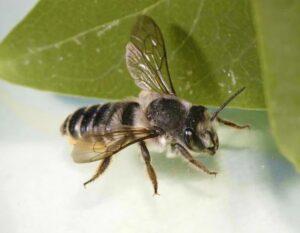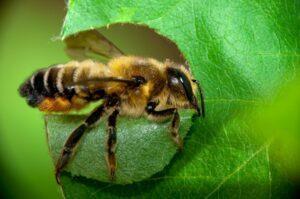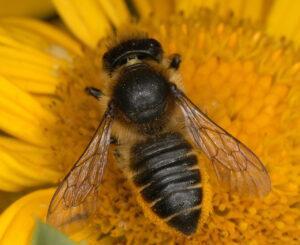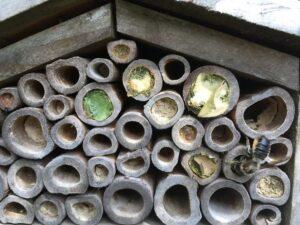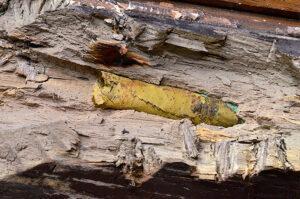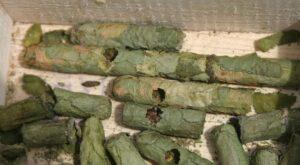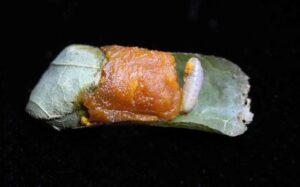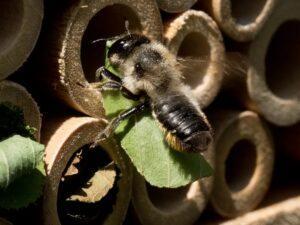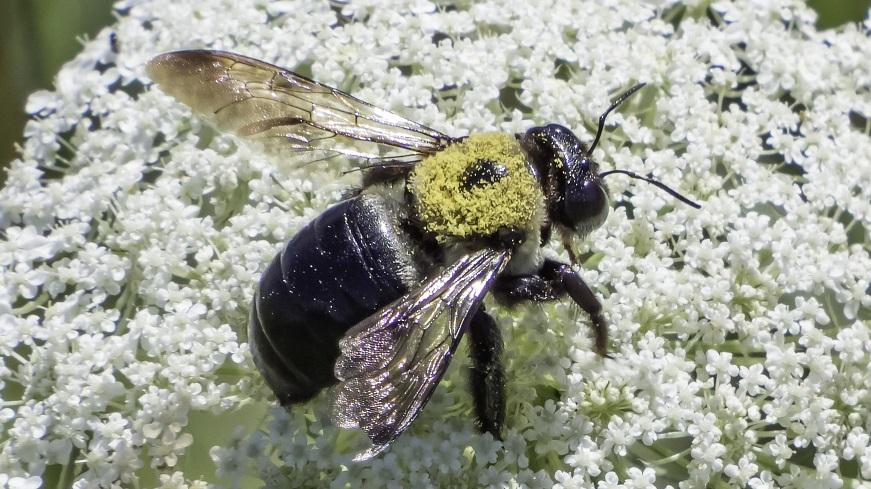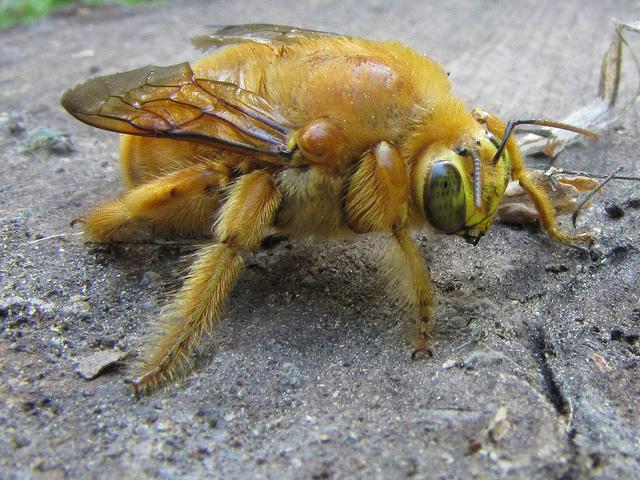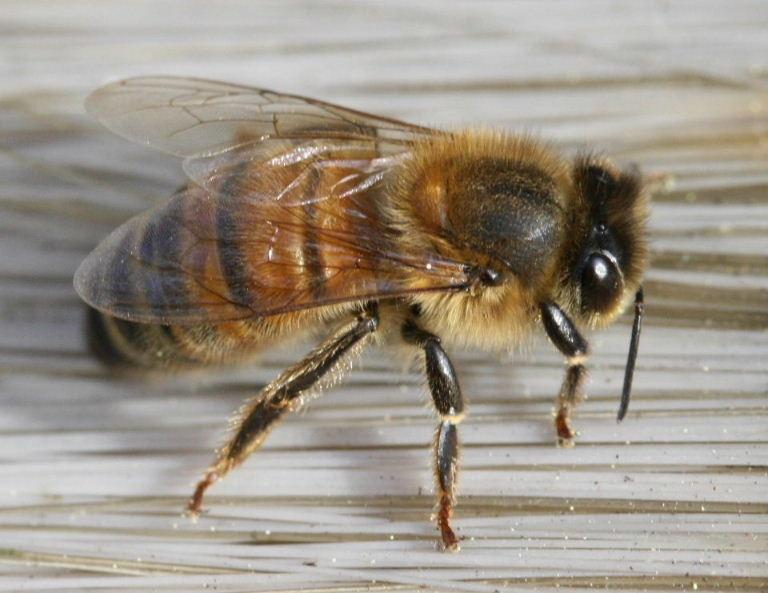Leafcutter Bee (Megachile)
Updated on
17/11/2022Leafcutter bees or leafcutting bees is the name given to the species of the Megachile genus. They get their name from their trait of constructing their nests by cutting leaves mainly of plants like rose, Virginia creeper, lilac, and green ash. Some bees of this genus are also known as mortar bees, resin bees, and carder bees, depending on how they make their dwelling. For instance, the bees building their nests using plant resins are known as resin bees. The genus has around 56 subgenera and 1520 species in totality.
Scientific Classification
- Class:Insecta
- Order:Hymenoptera
- Family:Megachilidae
- Genus:Megachile
Conservation Status
Subfamilies and Species Belonging to This Genus
Some of this genus’s subgenera and species are as follows.
Subgenera
- Chelostomoides
- Callomegachile
- Chalicodoma
Species
- Texas Leafcutter Bee
- Giant Resin Bee
- Alfalfa Leafcutter Bee
- Carpenter-mimic Leafcutter Bee
- Wallace’s Giant Bee
- Faithful Leafcutting Bee
- Bellflower Resin Bee
- Western Leafcutting Bee
- Willughby’s Leaf-Cutter Bee
Description
Most of the bees belonging to the leaf-cutting genus are of a moderate size ranging between 5 mm and 24 mm, similar to the size of a honey bee. They have a dark or black body with whitish hairy bands passing through their abdomen. These bees have a reputation for being effective pollinators. When they carry pollen in the undersides of their abdomen, the coloration of that particular area changes, appearing light yellow or deep gold.
The females appear larger with triangular-shaped abdomen pointed towards the tip. The males are smaller, with long antennae and a blunt abdominal tip.
Other Common Names: Mortar bees, megachild bees, resin bees
Distribution: Throughout the United States
Habitat: In burrows, hollow twigs, crevices, flower stems, rotting wood
Do They Bite/Sting: Yes, only for defense, their sting being mild and less painful than the yellowjacket wasps or honeybees
Lifespan: Males: 10 – 14 days, dying soon after mating; Female: Around two months
Predators: Beetles, wasps, flies, ants, and other wasp species
Behavior and Characteristics
Nesting
Living up to their name, the leafcutter bees neatly cut the leaves in a circular or semicircular manner. It uses the leaves as a lining to their nests that they make in the soil, inside holes in the wood perhaps made by other insects, or within stems of plants by constructing tunnels. The nests or these bee’s dwelling places are made up of several cells or chambers arranged sequentially in a single column. Each cell comprises a single egg placed by the female, alongside pollen often mixed with nectar as a food source for the larva that would eventually hatch out. There are exceptions, too, as all species of the leaf cutter genus do not cut leaves. Some, like those belonging to the Chalicodoma subgenus, carry dry plant resin in their mandibles to make their nests.
Social
All bees of the leafcutting genus are solitary. Most live by themselves instead of in big colonies or groups, unlike other social insects such as the yellowjackets, ants, bumblebees, etc. Most of the work, which includes digging the areas for constructing the nest, creating the nest cells, and supplying food to the young, is done by the female. After selecting the nesting site, the females hover in a zigzag pattern over the place to memorize the location.
They also defend and protect their nests but display less aggressiveness than the bumble or honeybees.
Diet
Like most other bees, their primary food includes nectar and pollen that they gather from flowers. They don’t have pollen baskets on the hind legs, unlike honeybees. Instead, the leafcutter uses its abdomen’s undersides to collect the pollen.
Life Cycle
1. Egg Stage
The adult females lay between 35 and 40 eggs on average during their 2-month life span. The eggs are laid inside the cells of the nests, with each egg placed inside a single cell. Then, the cells are securely sealed using a leaf segment, resembling the butt of a cigarette. The eggs that hatch into males are in front of the nest. Those that would develop into females remain positioned behind.
2. Larva Stage
The larva hatches from the eggs inside the nest, nurturing the food the mother bees leave for them. The mature larva remains dormant throughout the winter, mainly when the temperature is around 50°F.
3. Pupa Stage
The pupation stage also takes place inside the nest. They finally come out of their cocoon to develop into adult bees when the temperature gets slightly warmer to around 70 °F.
4. Adult Stage
Males hatch earlier than their female counterparts, searching for their mate right after their emergence. During mating, the males use their middle legs to clasp the female’s wings, pressing them against her body. The male’s sole function is to fertilize the female leafcutter bees, after which he dies.
Importance to Humans
The leafcutter bees have been identified as effective pollinators because of their trait of visiting flowers and collecting pollen from them. The alfalfa leafcutter bee is so efficient in pollinating the alfalfa plant each summer that it contributes to the process of producing seeds. According to the Agricultural Research Service of the US, the alfalfa leafcutter bee can perform the task of around twenty honeybees in pollination.
Getting Rid of Leafcutter Bees
While they are pollinators, on the one hand, they are even great destructors of plants since they make cuts on the leaf, destroying its aesthetic appeal. However, it does not cause harm to the plants since it never feeds on the leaf it cuts. It just uses the leaf as a prop to make its nest.
If you want to control leaf injuries, the only way to do it is to cover the plants with cheesecloth or perhaps a net during the season when they are active the most. Holes made in wood stuffed with brown or green leaves are a sign of leafcutter bee infestation. To prevent these bees from making tunnels in the rose canes, seal the pruned ends using glue, wax, or thumbtacks.
FAQs
The mason and leafcutter bee is a part of the same family, Megachilidae. However, mason bees are more commonly used to refer to the bees of the Osmia genus. One of the significant differences is the mason bees use mud or other masonry products to construct their nests. Whereas the leafcutter bees use cut leaves to line their nests.
Source
Bugwood.org, rackcdn.com, Flickr.com, blueberrytalk.wordpress.com, naturallycuriouswithmaryholland.wordpress.com, eol.org, theguardian.com




